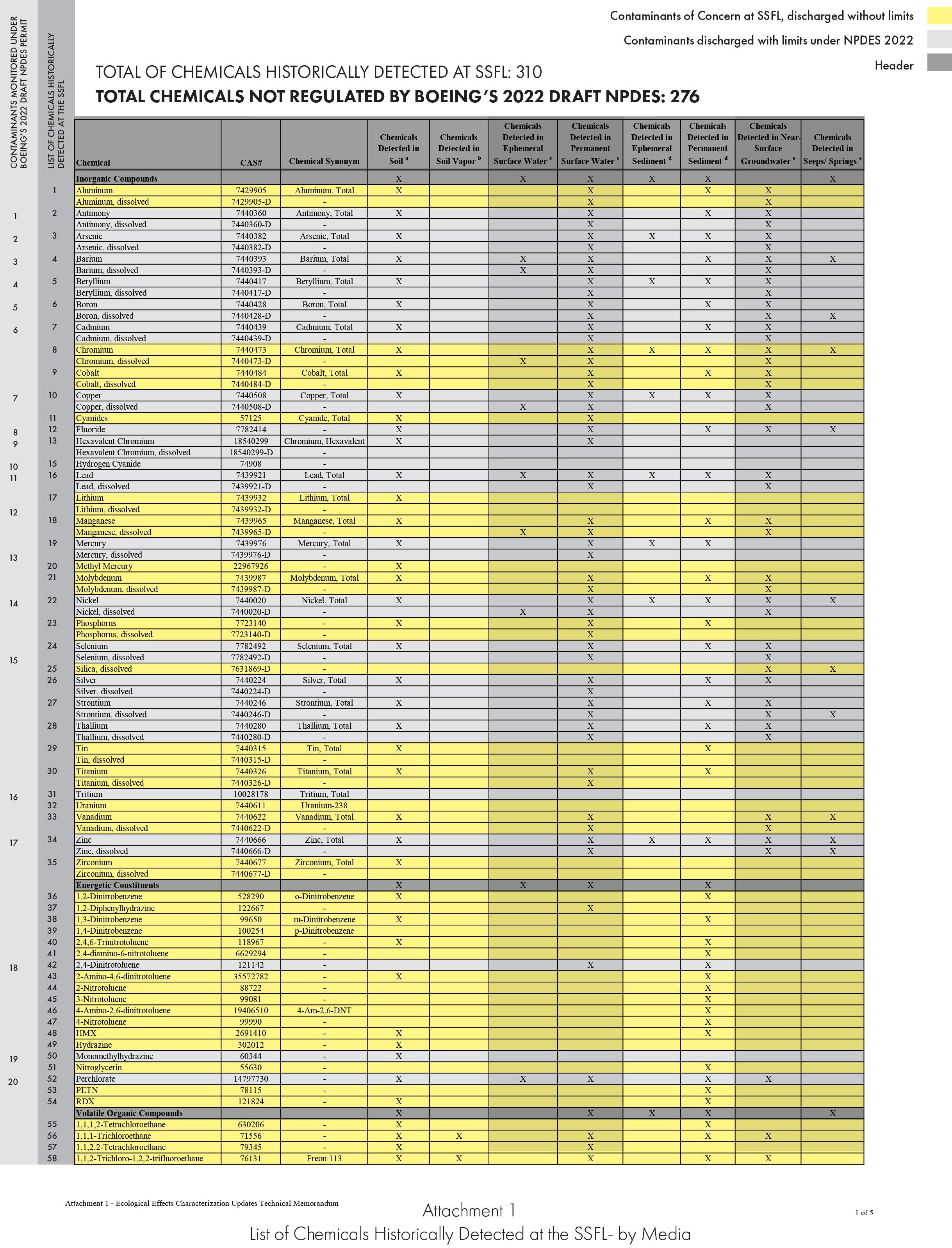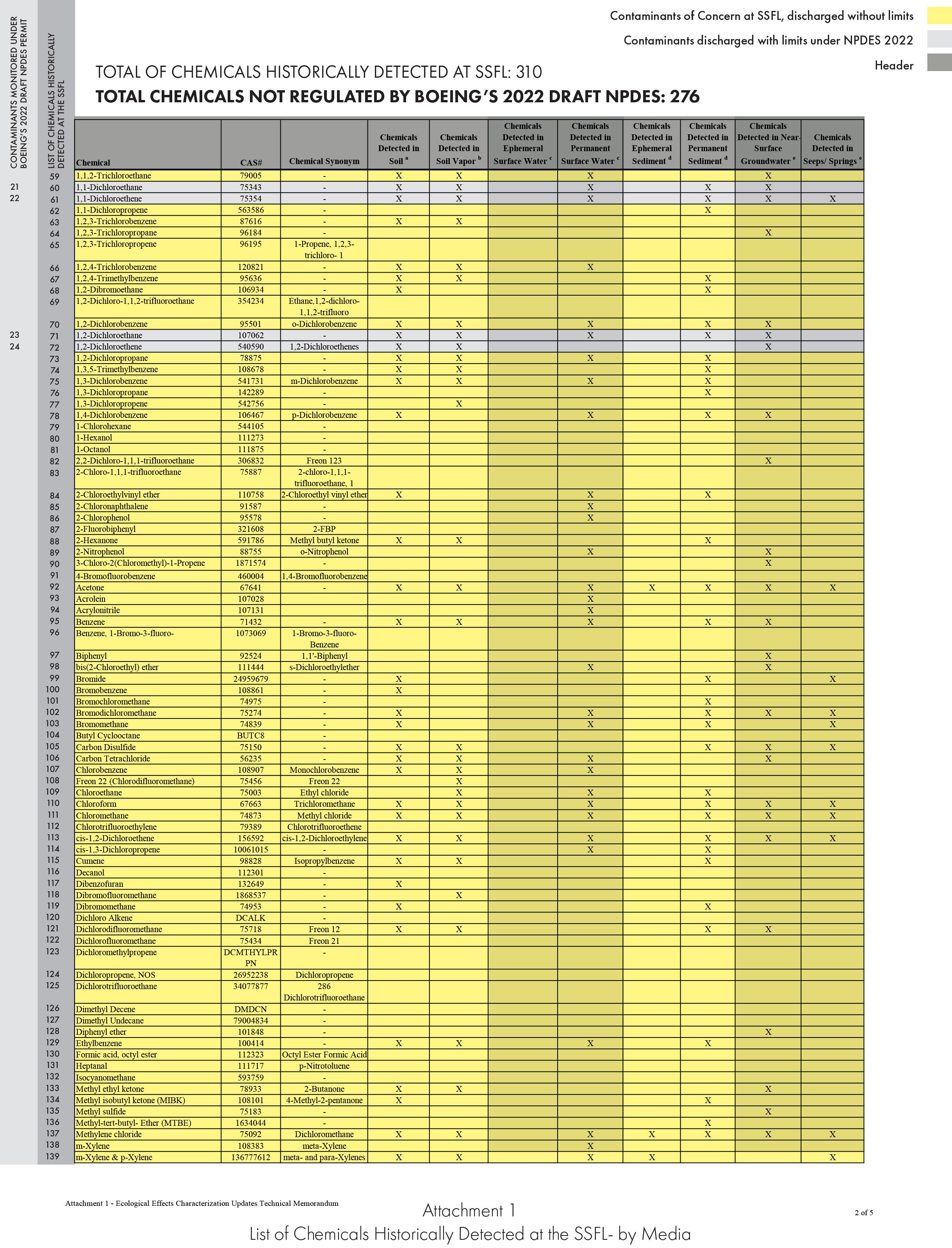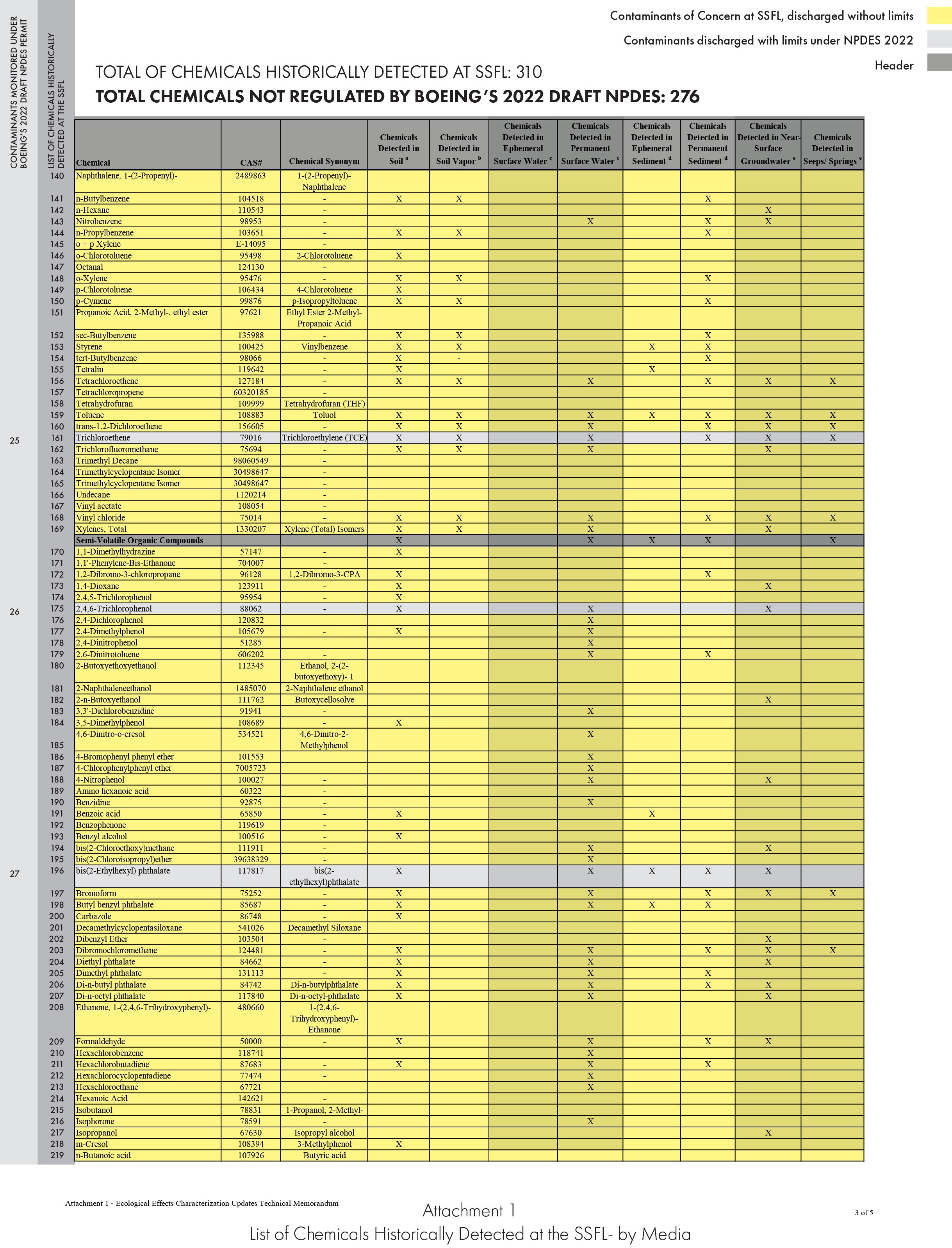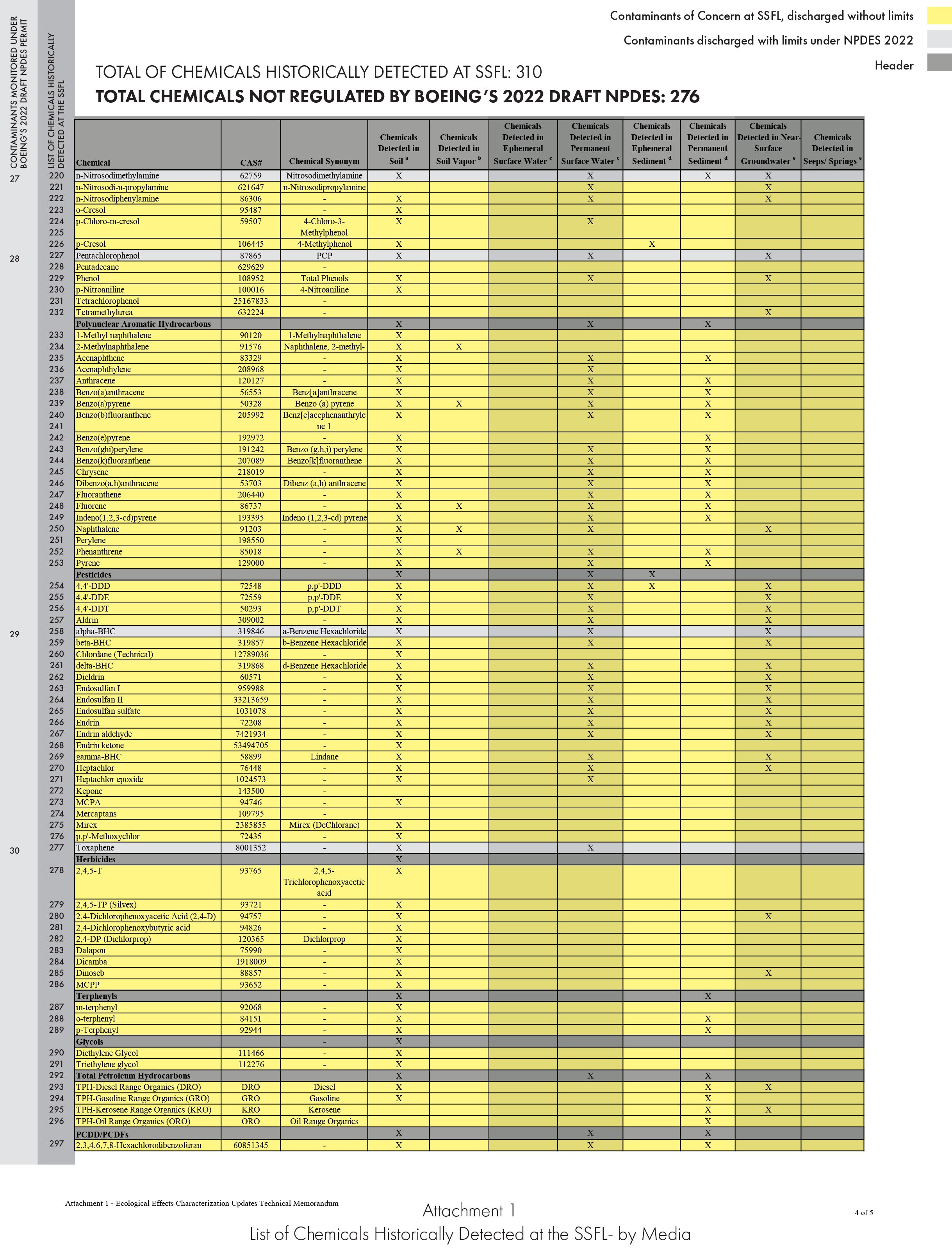Contamination at the ssfl
chemical contamination | heavy metals | OFFSITE CONTAMINATION | Radioactive contamination | water contamination
The contamination at the Santa Susana Field Lab is as diverse as it is dangerous. The site is rank with radioactive, chemical and heavy metal contamination. What makes the contamination so dangerous to the public is that the contamination isn’t buried in barrels underground. It was released into the environment through numerous accidents, open-air fires, spills, leaks, and explosions. The contamination is mixed in the soil and groundwater, making it easy for the contamination to migrate into the communities downhill.
Chemical waste generated at the SSFL facility was treated and stored on site, including in 28 surface ponds designed to collect cooling and rinse water, storm water runoff, and accidental spills. Many of these areas may have lacked proper containment facilities to prevent release of contaminants to the environment in the event of improper storage or spills throughout their operation. The Potential for Offsite Exposures Associated with Santa Susana Field Laboratory, Ventura County, California, Page 7
CHEMICAL CONTAMINATION
Boeing-owned portion of the SSFL
Work included:
Munitions Development
Chemical Laser Work
Tests Involving Exotic and Very Toxic Propellants and Rocket Fuels





There are 310 historically documented chemicals of concern at the Santa Susana Field Lab (in image above). Only 35 of these are currently being tested for by the Los Angeles Regional Water Quality Board under Boeing’s NPDES permit.
Further reading:
OFFSITE CONTAMINATION
For years the Department of Toxic Substances Control (DTSC) has been adamant that zero SSFL contamination migrates offsite… or if it does, it’s not in amounts above EPA levels of concern. They’ve been consistent in this message- even when it contradicts their own data.
The radioactive and chemical waste at the SSFL isn’t buried in barrels underground, or stored in vaults. It’s in the soil and water as a result of decades of spills, fires, meltdowns, explosions, leaks, and accidents. That’s what makes the SSFL contamination so dangerous; it can blow in the wind, wash down the hill in the rain, leach into groundwater, or spread as radioactive ash or dust during wildfires. It’s mobile, it’s hard to trace, and it’s deadly. That’s why we’re fighting for the smartest, safest, and most comprehensive cleanup possible.
RADIOACTIVE CONTAMINATION
Some of the radionuclides of concern at the SSFL include:
Cesium-137: Multiple Radiation Emitter. Exposure to Cs-137 can increase the risk for cancer because of the presence of high-energy gamma radiation. Internal exposure to Cs-137 through ingestion or inhalation allows the radioactive material to be distributed in the soft tissues, especially muscle tissue, which increases cancer risk. Half-life is 30 years, hazardous-life is 600 years.
Strontium-90: Beta Emitter. Strontium-90 can be inhaled, but ingestion in food and water is the greatest health concern. Once in the body, Sr-90 acts like calcium and is readily incorporated into bones and teeth, where it can cause cancers of the bone, bone marrow, and soft tissues around the bone. Half-life is 29 years, hazardous-life is 580 years.
Plutonium-239: Alpha emitter. Low-energy x-ray emitter. Easily absorbed by tissue. Human exposure occurs mainly by breathing contaminated air or ingesting contaminated food or drink. When plutonium particles are inhaled and lodge in lung tissue, they continue to give off radiation internally. They can remain in the lungs or enter the gastrointestinal tract and the bloodstream. About 80 percent of the plutonium that enters the bloodstream goes either to the liver, bone or bone marrow, where it is retained for years, damaging tissue nearby. That damage may later develop into cancer. The half-life of plutonium-239 is about 24,000 years. Hazardous-life is 482,000 years.
Thorium: There are natural and man-made forms of thorium, all of which are radioactive. If inhaled as dust, some thorium may remain in the lungs for long periods of time, depending on the chemical form. There is research evidence that inhaling thorium dust increases the risk of lung and pancreatic cancer. Individuals exposed to thorium also have an increased risk of bone cancer because thorium may be stored in bone. Thorium may also be linked to brain cancer, specifically glioblastoma and DIPG.
Tritium: Beta Emitter. Cancer is the main risk from humans ingesting tritium. When tritium decays it spits out a low-energy electron (roughly 18,000 electron volts) that escapes and slams into DNA, a ribosome or some other biologically important molecule. And, unlike other radionuclides, tritium is usually part of water, so it ends up in all parts of the body and therefore can, in theory, promote any kind of cancer. But that also helps reduce the risk: any tritiated water is typically excreted in less than a month.
Uranium:
heavy metal CONTAMINATION
Cadmium: A highly toxic heavy metal. Exposure to this metal is known to cause cancer and targets the body's cardiovascular, renal, gastrointestinal, neurological, reproductive, and respiratory systems. On page 2,877 of Boeing’s RFI report on the System Test Laboratory IV, cadmium exists at levels 727 times higher than the EPA’s Hazard Index for non-carcinogenic health impacts.
Water Contamination
PFAS
PFAS Resources
2021 GAO report (which covers Santa Susanna and talks generally about PFAS: https://www.gao.gov/assets/gao-21-205.pdf
Superfund sites with PFAS contamination: https://www.epw.senate.gov/public/index.cfm/superfund-sites-identified-by-epa-to-have-pfas-contamination
TCE and PFAS comingled in groundwater plumes is not at all unusual. At NASA’s Wallops Island facility in Virginia, for example, they have found both. Here are a couple of links that discuss what’s being done there:
Resources:
SRAM 2 (2014) Comprehensive SSFL COC list: Attachment 1 - Ecological Effects Characterization Updates Technical Memorandum
2006: Potential for Offsite Exposures Associated with SSFL, Chapter 4: Water
DTSC’S 2016 Site Description: Santa Susana Field Lab: Proposed Corrections to the Area IV
1992 Tritium Production and Releases to Groundwater at SSFL Safety Report
2005: Boeing Historical Site Assessment of Area IV of Santa Susana Field Lab:
SNAP Reactor: https://www.etec.energy.gov/Operations/Major_Operations/SNAP.php


